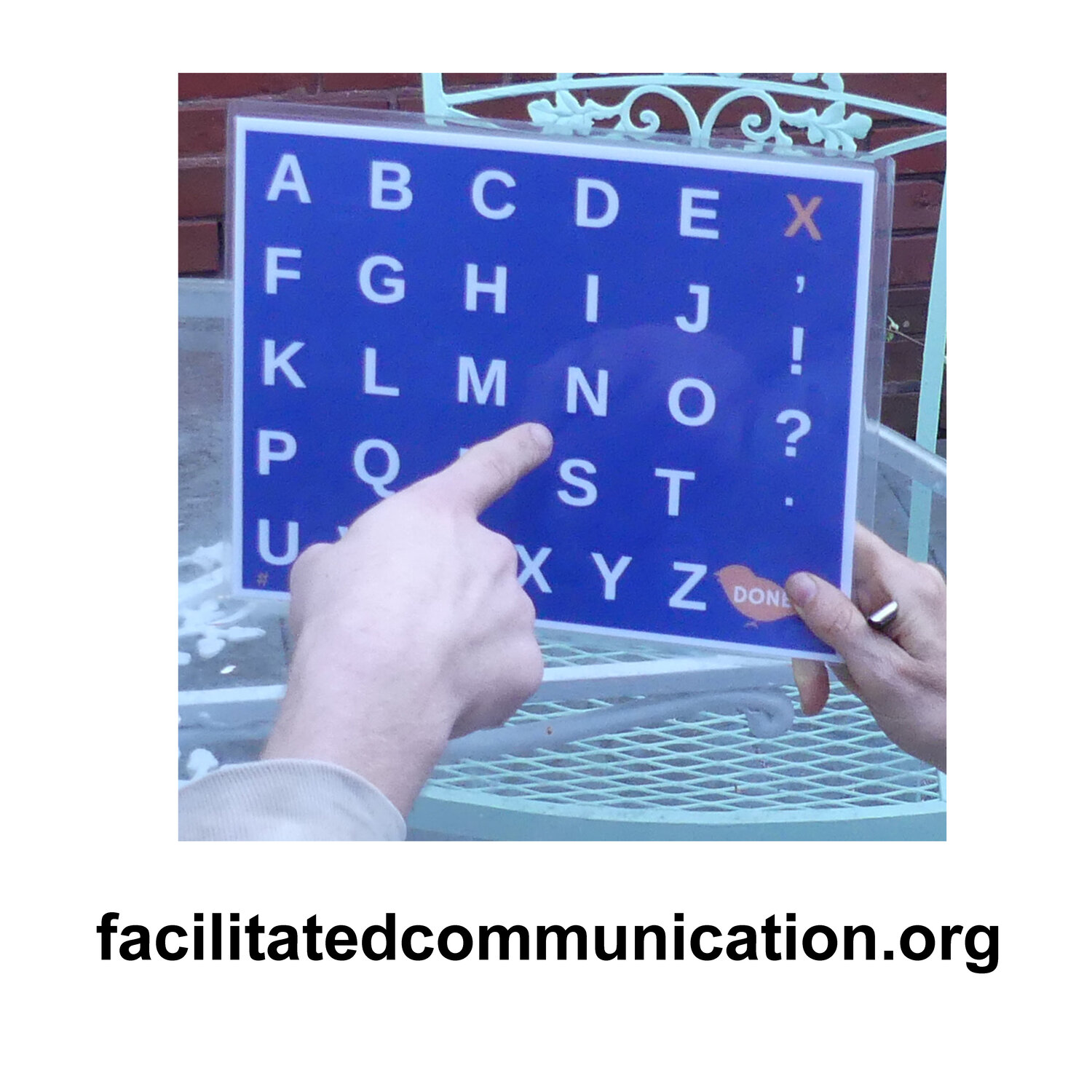Voice Questions and Concerns About FC
Matthew L. Tompkins in The Spectacle of Illusion writes:
Magicians have long known, and scientists are becoming increasingly aware, that misdirection can encompass much more than simply influencing where a spectator looks. Used effectively, misdirection can affect not just what we see, but how we reason and remember. Most of us recognize that we cannot always trust our eyes, but a deeper, more uncomfortable truth is that we cannot always trust our minds. (14)
We understand from experience and from the scientific evidence that FC is a facilitator-controlled technique and does not represent the independent voices of individuals with profound communication difficulties. We also understand that you will want to research this topic for yourself. We encourage this process by providing some questions you might want to consider if you suspect your client or loved one is being subjected to FC. This applies to all variants of FC (e.g., Spelling to Communication, Rapid Prompting Method, Supported Typing and many more).
Does FC have acceptance in the scientific community?
Has FC been tested for facilitator influence in reliably controlled settings? What were the results?
Are there facilitator behaviors during the typing activity that may indicate facilitator control: shifts in body weight, head nods, changes in vocal inflections, movement of the letter board when held in the air, hand signals, and the like? Who controls the start and stop of the typing sessions?
Is the person being subjected to FC looking at the board while typing?
Are the person’s verbal or non-verbal forms of communication being acknowledged by the facilitator or are these ignored in lieu of typed responses?
Are there reports of “unexpected literacy” or sudden changes in a student’s ability to communicate by typing?
What happens to the quality or sophistication of the written output when the facilitator is out of auditory and visual range of the person being facilitated?
Is the letter board stationery or is it being held in the air? Is there evidence of small movements by the facilitator (e.g., the ideomotor effect)?
Are videos of the facilitation session closely cropped to block out the facilitator and make it appear the individual is typing independently?
Do the written communications reflect the language structures that correspond with the age, educational experience, and personal experiences of the person being facilitated?
Does the person interact with the communication device (high or low tech) without interference from the facilitator?
With FC pairings in the classroom, who is completing the coursework? What assessments are in place to make sure the student and not the facilitator is doing the work?
In the unfortunate event of allegations of abuse using FC as at the sole form of communication, what measures are in place to test authorship before determining whether or not the allegations are true?
What reasons do organizations opposing FC give for taking a stance against it? What measures have they taken to reach this decision? How long have these positions been in place?
Is FC considered a legitimate form of Augmentative and Alternative Communication (AAC)?
Are there documented harms to using FC?
Why are there so many different names for FC: Spelling to Communicate, Rapid Prompting Method, Supported Typing, Typing to Communicate, Informative Pointing, Hand-Over-Hand? Why do proponents keep changing the name?
If FC is so effective, why is it considered a “technique of last resort” even by proponents?
Are facilitators willing to test authorship under reliably controlled conditions (e.g., in double blind testing that prevents facilitators from being involved with the development or implementation of the test protocols)?
Was the student taught how to read and write or did they “know” how to write simply by being exposed to books, television or other media?
What are the financial and opportunity costs of using FC?
Has there been a demonstrable transfer of skills from the assistant/facilitator to the individual being subjected to FC—even if “support” has been “faded.”
Why does it take months or years to fade support, when there is no evidence to prove it takes that long. Fading support should take days, maybe weeks, but not years.
For more questions, please check out the following:
Thyagarajan, S., & Celiberti, D. (2024). A review of Questions to ask facilitators and yourself while observing FC/S2C/RPM sessions. Science in Autism Treatment, 21(8).

